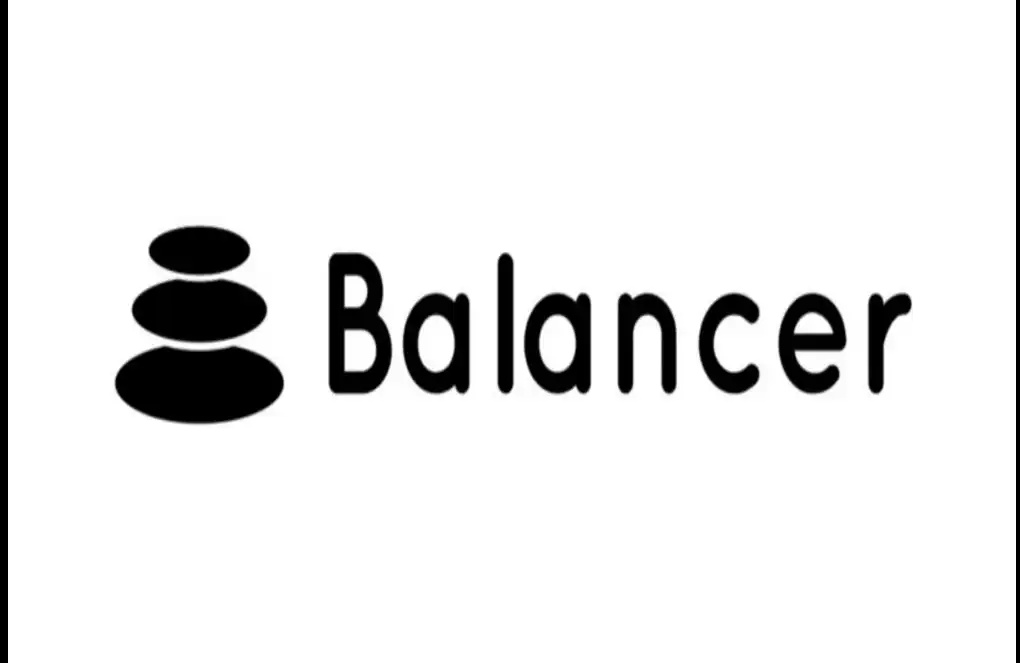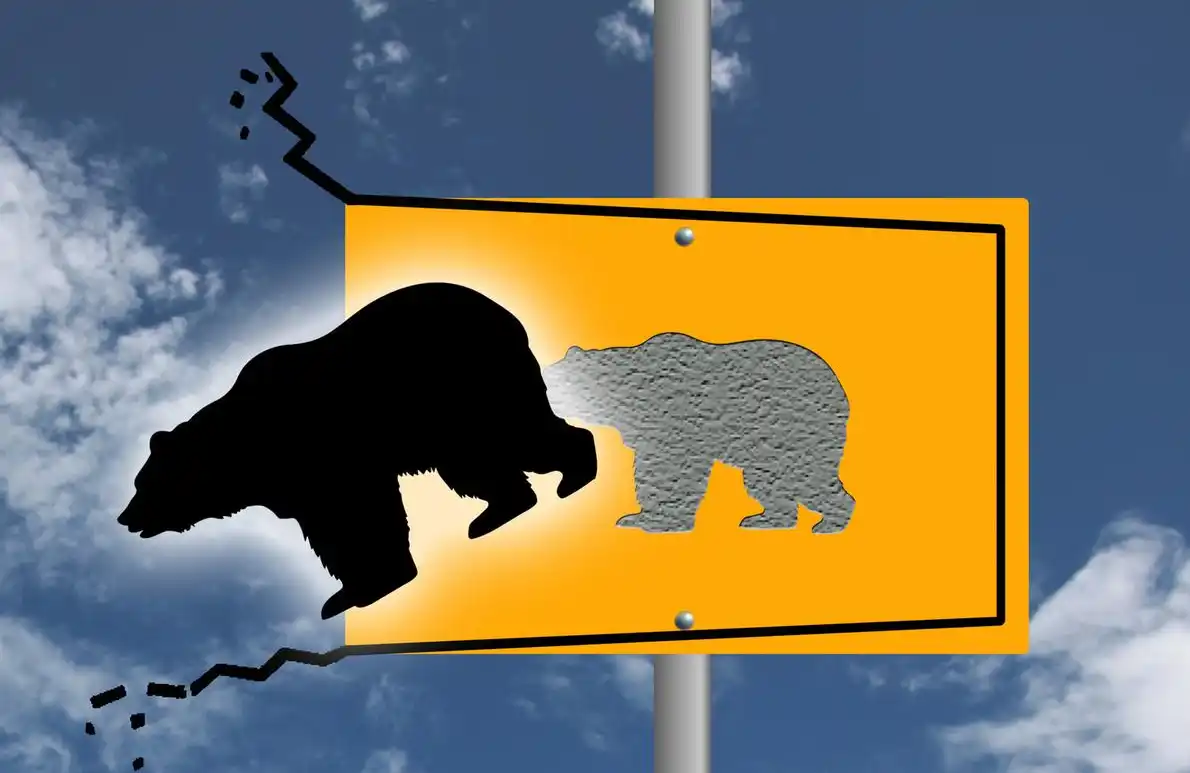Arthur Hayes: A pullback or a secular bull market? The Fed's turn will determine everything
Bouncy Castle
Original author:Arthur Hayes
GaryMa, Wu says blockchain

US CPI year-on-year index
As you can see from the chart above, inflation as measured by the (flawed and misleading) Consumer Price Index (CPI) series published by the Bureau of Labor Statistics peaked at around 9% in mid-2022 and is now hurtling toward the all-important 2% level.
There are plenty of people who think the recent steady downward trend in CPI means only one thing: Powell is ready to let the water run again, just like it did in March 2020. With the US and possibly the world on the brink of recession, those prognoseers will say that Powell is looking for every opportunity to shift away from his current policy of quantitative tightening (QT), which will bear much of the blame if we enter a recession. With CPI falling, he can now point to the decline and say that his just campaign to kill the beast of inflation has succeeded and that the spigot can now be safely turned back on.
I'm not so sure these predictions are correct, but we'll talk more about that in a moment. Now, let's assume that the market thinks this is the most likely path forward. How can we expect Bitcoin to react? To model this accurately, we have to keep two important things in mind about Bitcoin.
First, bitcoin and the broader crypto capital markets are the only ones that are truly free from manipulation by central bankers and large global financial institutions. You may ask: "But what about the alleged misconduct of bankrupt companies like 3AC, FTX, Genesis, Celsius, etc." It's a fair question, but my answer is that as crypto market prices adjust and these companies go out of business, the market quickly finds a much lower clearing price at which leverage is flushed out of the system. If the same recklessness had occurred in the TradFi system, the authorities would have tried to delay the market's liquidation by propping up failing entities (as they always do), and in the process undermining the very economy they were supposed to protect, but the cryptocurrency space has faced serious challenges and has been quick to clean up poorly run businesses with flawed business models, Laying the foundation for a rapid and healthy rebound.
The second thing to remember about bitcoin is that because it is a reaction to the profligacy of the world's global fiat currency system, its price is heavily dependent on the future path of dollar global liquidity (due to the dollar's role as the global reserve currency). I talked at length about this concept and my dollar liquidity index in a recent post. To that end, bitcoin has outperformed the flat dollar liquidity index over the past two months. To me, this suggests that the market thinks the Fed's turn has come.

Gold (yellow), bitcoin (green), and the Dollar Liquidity Index (white) with an index of 100
Looking at the price action of bitcoin, it is currently pulling up from a low point. From here, we can identify several different potential paths forward based on what is actually driving the rally:
Rally catalyst scenario 1: Bitcoin simply experienced a natural rebound from its local lows below $16,000.
If this rally is really just a natural rebound from local lows, I would expect Bitcoin to then find a new platform and move sideways until dollar liquidity conditions improve.
Rally catalyst scenario 2: Bitcoin rises because the market is ahead of the Fed resuming money printing. If so, I think there are two possible scenarios:
· Scenario 2A:If the Fed doesn't implement a pivot, or if multiple Fed officials don't think much of a pivot after the "good" CPI data, bitcoin could fall back to its previous lows.
· Scenario 2B:If the Fed does implement a pivot, Bitcoin will continue to perform strongly and this rally will be the start of a secular bull market.
Obviously, we all want to believe that we're moving towards scenario 2B. That said, I think we'll actually be facing some combination of scenarios 1 and 2A, which gives my itchy "buy" finger a little pause.
While I believe the Fed will turn, I don't think it will happen just because the CPI is trending lower. Mr Powell declared that he was more focused on the interaction between wage growth (US hourly earnings) and core personal consumption expenditures (core PCE), rather than relying on the CPI as a measure of inflation. As an aside, I don't think CPI and core CPE are good measures of inflation. Core PCE is particularly hypocritical because it excludes food and energy. Commoners are not rioting over a rise in the price of flat-screen TVS, but over a 100% rise in the price of bread. But regardless of what I think, what is important for our forecasting exercise is that Mr Powell has telegraphed his intention to base any decisions on potential policy shifts not just on the CPI but also on US wage growth versus core personal consumption expenditures.

The change in US earnings per hour minus the change in core PCE is a percentage increase year over year
As you can see from the chart above, average wages in the United States are rising at the same rate as inflation. This means that while goods are getting more expensive, people's ability to buy them is actually growing at a similar rate because of rising wages. As a result, people's increased purchasing power is likely to drive commodity inflation further. In other words, producers of goods may realize that their buyers are now making more money than before and raise prices further to absorb more of buyers' recent wage increases, all without fear of killing demand for their products. So Mr Powell actually has a case for continuing to raise interest rates (that is, dampening consumer demand and preventing commodity prices from rising further). And he is likely to use it, since he has said he is seeking to ensure that the yield across the Treasury curve is above the rate of inflation (it isn't yet).

Us Treasury bond activity curve
Core personal consumption expenditures rose 4.7% in December 2022 from a year earlier. As you can see from the above curve, only the six-month Treasury bill is currently yielding more than 4.7%. So Mr Powell has plenty of leeway to keep raising rates. More important, continue to shrink the Fed's balance sheet and further tighten monetary conditions to where he wants them.
The point of these last few charts and some statements is simply to show that the falling CPI number is meaningless because it is inconsistent with the actual measure Powell uses to judge whether the Fed is succeeding in taming inflation. The decline in CPI may mean something, but I don't think it will predict in any meaningful way when the Fed will eventually turn.
That said, I do believe that if Powell ignores the CPI number and continues to shrink the Fed's balance sheet via QT, it will cause severe disruption in credit markets and force them to actively turn.
As of January 4, 2023, the Fed's balance sheet has shrunk by $458 billion since hitting a high of $8.965 trillion on April 13, 2022. The Fed was supposed to shrink its total balance sheet by $523 billion in 2022, so they've already met 88 percent of their target. The current QT rate suggests that the balance sheet will shrink by another $100 billion per month and another $1.2 trillion in fiscal year 2023. If pulling $500 billion in 2022 resulted in the worst bond and stock performance in centuries, imagine what would happen if double that amount were removed in 2023.
Markets react asymmetrically when money is injected and withdrawn. So I expect the law of unintended consequences to bite the Fed's ass as it continues to withdraw liquidity. I also believe Powell instinctively understands this because, despite his very aggressive QT, at the current rate it will take many years to fully reverse the amount of money printed since the start of the COVID-19 pandemic. From mid-March 2020 to mid-April 2022, the Fed printed $4.653 trillion. At $100bn a month, it would take about four years to fully return to pre-pandemic levels of the Fed's balance sheet.
If the Fed really wanted to reverse money growth, it would sell MBS and Treasury bonds outright, rather than just stop reinvesting maturing bonds. Powell could have picked up the pace, but he didn't, suggesting he knew the market couldn't withstand the Fed selling off its assets. But I still think he overestimates the market's ability to cope with the Fed's continued passive involvement. The MBS and Treasury markets need Fed liquidity, and if QT continues to grow at the same rate, these markets and all other fixed income markets that get their valuations and pricing from these benchmarks will soon be in a world of pain.
In my view, two things could prompt the Fed to turn:
1. Powell sees the decline in CPI as confirmation that the Fed has done enough to pause at some point soon, possibly stopping QT and cutting rates if there is a mild recession in the second half of '23. Monetary policy typically has a 12 to 24 month lag, so Powell sees a downward trend in CPI and can be confident that based on what has happened over the past year, inflation will continue to return to the holy grail of 2 percent in the near future. As I outlined above, I think this scenario is unlikely because I don't think Powell uses the CPI as a measure of inflation, but it's not out of the question.
2. Parts of the United States credit markets collapsed, leading to a financial meltdown involving a wide range of financial assets. In a response similar to March 2020, the Fed called an emergency press conference, stopped QT, slashed interest rates, and restarted quantitative easing by buying bonds again.
In scenario 1, I expect risk asset prices to slowly rise. We're not going back to the 2022 lows, and it's going to be a pleasant environment for fund managers. Just sit back and watch the base effects of CPI kick in, mechanically lowering the headline number. The US economy will find itself in a so-so position, but nothing very bad will happen. Even if there is a slight recession, it will not be anything like what we saw between March and April 2020 or during the 2008 global financial crisis. Of the two scenarios, this is the preferred one because it means you can start buying now, before the economy turns positive and inflation stays low.
In scenario 2, risky asset prices collapse. As the glue of the dollar-based global financial system dissolves, bonds, stocks and every cryptocurrency under the sun will be blackened. Imagine the US 10-year Treasury yield rapidly doubling from 3.5% to 7%, the S&P 500 falling below 3,000, the Nasdaq 100 falling below 8,000, and bitcoin trading at 15,000 or less. Like a deer caught in the headlights, I expect Sir Powell to mount his horse and ride to the rescue with an army of money-printing. This is not ideal because it means that everyone who buys risky assets now faces a big drop in performance. Before the Fed turns, 2023 could be just as bad as 2022.
My guess is scenario 2.
Why is gold rising?

Gold (yellow), bitcoin (green), and the Dollar Liquidity Index (white) with an index of 100
The most plausible rebuttal to my scenario 2 basic assumption is that gold has risen along with bitcoin. Gold, a more liquid and trusted anti-fragile asset, serves a similar purpose, namely that it is also a hedge against the fiat currency system. So, at first glance, you might reasonably speculate that gold's recent rally is further evidence that the market believes the Fed will adjust policy in the near future. That's a reasonable assumption, but I suspect gold's rise is for another reason entirely. So it's important not to conflate the rise in gold and bitcoin as a joint confirmation of the Fed's impending turn. Let me explain.
Gold is a sovereign currency because, at the end of the day, nation states can always use gold to settle trade in goods and energy. That's why every central bank has a certain amount of gold on its balance sheet.
Since each central bank holds a certain amount of gold, central banks always resort to devaluing gold when a country's currency must devalue to remain globally competitive. A more recent example was when the United States devalued the dollar against gold in 1933 and 1971. That's why I have a large allocation to physical gold and gold miners in my portfolio. It is always better to invest alongside the central bank than against it.
I (and many others) have written extensively about how the de-dollarization of the world will accelerate in the coming years in the wake of several recent key geopolitical events, such as the U.S. freezing of Russian "assets" held in the Western financial system. Sooner or later, I expect the world's producers of cheap labor and natural resources will realize that it makes no sense to store their wealth in U.S. Treasury bonds, since they could face the same fate as Russia if they annoy the rest of the United States. This makes gold the most obvious and attractive investment destination.
The figures support the idea that governments are turning to gold, the long-established sovereign reserve currency, to store wealth. The chart below goes back 10 years and charts net gold purchases by central banks. As you can see, we hit a record high in the third quarter of 2022.

Net gold purchases by central banks (metric tons)
The peak of cheap energy is here, and many world leaders recognize it. They instinctively know, as most people do, that gold has a better buying power in energy (crude oil) than currencies such as the US dollar.

This excellent chart from Gavekal Research makes it clear that gold is a better store of energy than US Treasuries.
To me, these data suggest that gold is rising more because of real physical demand than because the world's central banks think the Fed is going to turn. Of course, at least some of this is due to expectations that the Fed's monetary policy may be eased in the near future, but I don't think those expectations are the driving force behind it.
Transaction preparation
What if I'm wrong and the economy is good and inflation is low and scenario 1 happens?
That means I've missed the rally from the bottom, and bitcoin is unlikely to turn back as it heads inexorably toward a new all-time high. If true, the rate rise could come in two stages. In the first phase, savvy speculators will get ahead of the actual shift in Fed policy. At this stage, bitcoin could easily trade to $30,000 - $40,000, as prices are currently being severely depressed by post-FTX bearish sentiment. The next phase will take us to $69,000 or higher, but can only begin after a significant injection of dollars into the crypto capital market. Such an injection would require at least a pause in interest rate hikes and QT.
If I'm wrong, I'm happy to miss the initial opportunity to bounce off the bottom. I've done more, so I'll benefit no matter what. But the dollars I had in the form of Treasury bills would suddenly underperform, and I would need to reallocate those funds into Bitcoin to maximize the return on my investment. However, I want to have a high degree of confidence that the bull market is back before I abandon bonds bought at 5%. Five percent is obviously lower than inflation, but it's better than falling 20 percent because I didn't time the market well and bought risky assets too early in the next cycle.
When they do decide to turn, the Fed will clearly communicate in advance that they are abandoning tight monetary policy. The Fed told us at the end of 2021 that they would shift to fighting inflation by restricting the money supply and raising interest rates. They stayed the course and started doing so in March 2022, and anyone who didn't believe in them was slaughtered. So the same thing is likely to happen in the other direction, namely, the Fed will tell us when it's over, and if you don't believe them, you'll miss the subsequent surge.
Since the Fed has yet to signal a turn, I can wait. I think the first is to break even and the second is to grow. I would rather buy a market that has rallied 100%+ from its lows after the Fed communicated the turn than buy a market that has rallied 100%+ from its lows because the turn didn't happen and then suffers a 50%+ correction due to poor macro fundamentals.
If I am right and catastrophic scenario 2 occurs (i.e., a global financial collapse), then I have another opportunity to bargain hunt. I will know that the market has probably bottomed because the crash that occurs when the system temporarily breaks down will either hold its previous low of $15,800 or it won't. It doesn't matter where the downside ends up, because I know the Fed will then move to print money and avoid another financial collapse, which in turn will mark the bottom for all risky assets. Then I got another scenario similar to March 2020, stepping up cryptocurrency purchases.
Original link
Welcome to join the official BlockBeats community:
Telegram Subscription Group: https://t.me/theblockbeats
Telegram Discussion Group: https://t.me/BlockBeats_App
Official Twitter Account: https://twitter.com/BlockBeatsAsia


 Forum
Forum Finance
Finance
 Specials
Specials
 On-chain Eco
On-chain Eco
 Entry
Entry
 Podcasts
Podcasts
 Activities
Activities
 OPRR
OPRR









